By: Roxanna N. Pebdani,
University of Sydney
The concept of Intersectionality is becoming increasingly common in discussions of diversity, and is useful in understanding the experiences of individuals with minority identities. Intersectionality is a term popularized by University of California, Los Angeles Law Professor Kimberlé Crenshaw in the early 1900’s (Crenshaw, 1991). The concept began within feminism – at the time (and even now) feminism was, by many, seen as exclusionary to the experiences and voices of women of color. Crenshaw wrote that women of color experience sexism differently, based on their experiences of both racism and sexism. The intersection of their gender and their race led to differential treatment. Crenshaw cited the example of women who experience domestic violence—an issue that affects women regardless of their race. Women of color working to regain their independence after experiencing domestic violence will face different barriers than their white counterparts. Women of color may experience employment and housing discrimination which can affect the difficulties they experience. As such, their race and their gender intersect to cause an experience different than a white woman in the same situation may face.
Though intersectionality has historically focused on the intersection of race and gender and an eventual addition of class, our newer understanding of intersectionality is much broader (Hancock, 2007). We now see intersectionality as how our many identities interact to influence our lived experiences. Identities can include race, gender, sexual orientation, ability status, religion, among many others, and how these identities interact with one another to uniquely influence a person’s experience is what we call intersectionality. For example, a person who was born with Spina Bifida but grew up in a very affluent family will likely have a different experience from someone who grew up in a low-income family and was also born with Spina Bifida. Their disability experience, while theoretically similar, will likely be changed by access to financial means. For example, the experience of needing a $7,000 electric wheelchair will be very different for a person fighting to fund their chair through Medicare versus a person whose family is able to pay for the chair outright. The intersection of disability and income here demonstrates the impact of different identities and access in the world.
In higher education, it is important that we understand the intersection of multiple identities, especially how these identities intersect with disability. For example, the intersection of socioeconomic status and disability can influence access to accommodations. A student who comes from a low-income background may have attended schools with fewer resources, and therefore they may have received educational testing much later in their educational career. This would lead to a delay in the provision of accommodations and supports for this student, likely affecting their education. On the other hand, someone from a higher socioeconomic background may have had access to educational testing outside of the school or had access to a school psychologist with a smaller caseload – which meant that it was provided immediately when a problem was detected, likely minimizing the impact of a disability through early detection.
Another example of intersectionality and disability in education is the overrepresentation of minority students in special education. Research has shown that African American students are more likely to be placed into special education classes—and much more likely to be diagnosed with an intellectual disability than their white counterparts (Donovan & Cross, 2002; Shuttleworth-Edwards, 2016; Skiba et al., 2008). Though African Americans make up only 17% of school age children, they comprise 33% of students diagnosed with intellectual disabilities (Donovan & Cross, 2002). Much research (and even lawsuits) have suggested that bias in IQ testing leads to African Americans having lower scores, causing them to be misdiagnosed with intellectual disabilities (Shuttleworth-Edwards, 2016; Skiba et al., 2008). This bias is so widely recognized that IQ tests cannot legally be used to place black or African American students in special education in California. However, this is not the case for the rest of the United States. Additionally, it is not only African Americans who are overrepresented in special education. American Indians/Alaskan Natives are more likely to be diagnosed with learning disabilities, Latino/a and Asian American/Pacific Islander students are more likely to be diagnosed with hearing difficulties, and Asian American/Pacific Islanders are also more likely to be diagnosed on the Autism Spectrum (Skiba et al., 2008). On the flip side, while Latinx students are more likely to receive special education services for hearing difficulties, research shows that Latinx students are likely underrepresented in special education for other diagnoses, preventing them from receiving the services they need (Skiba et al., 2008).
Intersectionality allows us to understand how identities interact with one another to influence a person’s life, and in this article, disability status specifically. The intersections between a person’s various identities (including but not limited to race, gender, sexual orientation, ability status, and religion) can impact all facets of a person’s life. Higher education professionals will benefit from understanding intersectionality as a concept in general, and being able to recognize how it affects the experiences of their students.
References
Crenshaw, K. (1991). Mapping the margins: Intersectionality, identity politics, and voilence against women of color. Stanford Law Review, 43(6), 1241-1299.
Donovan, M. S., & Cross, C. T. (2002). Minority students in special and gifted education. Retrieved from Washington, DC:
Hancock, A. (2007). Intersectionality as a normative and empirical paradigm. Politics & Gender, 3(2), 248-254. doi:10.1017/S1743923X07000062
Shuttleworth-Edwards, A. B. (2016). Generally representative is representative of none: commentary on the pitfalls of IQ test standardization in multicultural settings. The Clinical Neuropsychologist, 30(7), 975-998. doi:10.1080/13854046.2016.1204011
Skiba, R. J., Simmons, A. D., Ritter, S., Gibs, A. C., K., R. M., Cuarado, J., & Chung, C.-G. (2008). Achieveing equity in special education: History, status, and current challenges. Exceptional Children, 74(3), 264-288.
